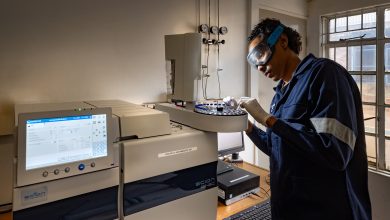
Kenya – AUC set to host Second Africa Fertilizer & Soil Health Summit
By Hon. Dr. Kipronoh Ronoh,PhD
In recent weeks, East Africa has witnessed heavy rains, marking a return to peak levels last seen in 2017. For farmers in countries like Kenya, Tanzania, and Uganda, this surge in rainfall comes as a welcome relief, alleviating the anxiety of uncertain rainfall that has previously affected planting seasons.
The prospect of a prolonged rainy season that is conducive to crop establishment, and its predicted tapering towards the harvesting period, paints a promising picture for agricultural production in the region.
However, amidst this optimism, it is crucial to address the other underlying issues that have hindered agricultural productivity in East Africa and the larger African continent. One such pressing concern is the health of the soil. Years of overexploitation and minimal replenishment have led to nutrient depletion across vast agricultural regions.
Coupled with the unsustainable loss of vegetation and landscape functions, sub-optimal land practices have for a long time stagnated crop yields. For example, despite the potential for maize output to reach well over 6t/ha, it has in most parts of East Africa remained at an average of 1.8t/ha on account of inadequate soil nutrition, failing to meet the demands of a growing population.
In Kenya, where ambitious national targets, including Vision 2030, hinge on sustained agricultural growth, the current rate of soil degradation poses a significant obstacle. Recognizing the urgency of the situation, the Government of Kenya, under the leadership of H.E. President Dr. William Ruto, has taken proactive steps to address this challenge. This includes the allocation of substantial resources of KSh5b (approx. USD39m) towards the supply of subsidized fertilizer in 2024.
Such investments aim to bolster agricultural productivity and propel the sector towards the 7% annual growth that is envisioned to drive the creation of a globally competitive and prosperous country with a high quality of life as stipulated in Vision 2030.
Now in its second year, the subsidy program, is poised to make a tangible impact on grain production, having gained traction in 2023, when the country’s agricultural sector reported rejuvenation in the final three quarters for an average 7% growth (6.1% in Q2; 8.2% in Q3 and 6.7% in Q4).
In 2024, under the national subsidy programme, the Kenyan government will distribute over 12.5 million 50Kg bags of fertilizer to farmers across the country. The introduction of an e-voucher system in the process further enhances accountability and transparency in the distribution and usage of subsidized fertilizers, ensuring that resources are efficiently utilized.
Through strategic fertilizer application, farmers are expected to witness a 31% increase in maize production, from 61 million (90Kg) bags in 2022 to 80 million bags in 2024. It is important to note that in this process, the Kenyan government has closely collaborated with various partners to map soils and provide recommendations for the specific fertilizers and other inputs required for different regions and crops.
This reflects a holistic approach to agricultural transformation that also involves empowering farmers with knowledge and access to high-yielding seeds, alongside subsidized fertilizers, initiatives that align with the goals of the 10-year Agricultural Transformation Strategy (ASTGS). The ASTGS is centered on comprehensive interventions that increase small-scale farmer incomes, boost agricultural output, and enhance household food resilience.
However, sustainable agricultural development cannot thrive in isolation. Market access plays a pivotal role in ensuring the viability and longevity of farming endeavors. Efforts to enhance export options through initiatives like the African Continental Free Trade Area (AfCFTA), coupled with investments in local infrastructure to mitigate post-harvest losses, are essential for fostering a robust agricultural economy.
Such are the considerations that we, as stakeholders in East African agriculture, are called upon to keep in mind as we collectively strive to shape the future of the sector. However, there are a lot more factors to consider and which we can engage and advance on in different continental fora. On which note, I am pleased to introduce the 2024 Africa Fertilizer and Soil Health Summit (AFSH Summit), which takes place in Nairobi, Kenya from May 7 – 9 as a platform for dialogue and collaboration, with opportunities for discussions and partnerships on agricultural strategies for meaningful change.
On behalf of the Kenyan government, I welcome you all to the three days of dialogue and strategizing to drive a multifaceted approach that addresses Africa’s immediate challenges like soil health and input accessibility, as well as long-term sustainability and market dynamics.
The writer is the Principal Secretary in the State Department for Agriculture in Kenya’s Ministry of Agriculture and Livestock Development






